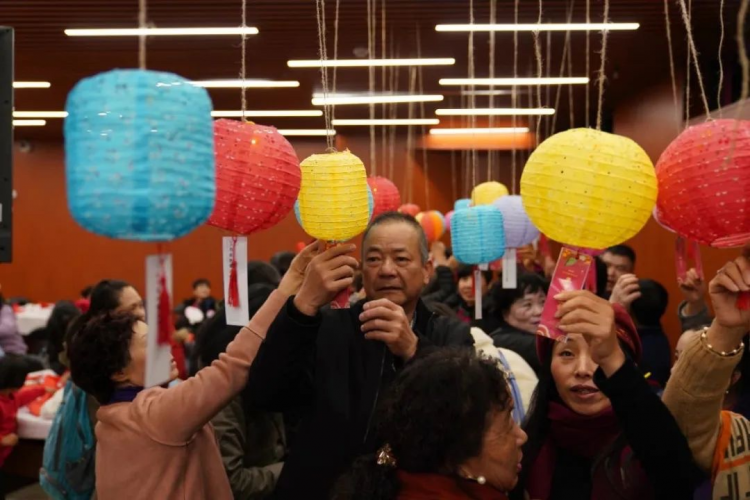The blood feud system in the Zhou Dynasty (1046 BC–256 BC) established the social structure of China. The consanguineous community has become the basis of social resource allocation. Therefore, consanguinity is the main channel through which Chinese society operates. The non-consanguineous social groups, which are ultra-consanguineous, also operate in the same way; for example, the sworn brothers of different surnames, the mentoring relationship in which the mentor for life is regarded as a father, and the recognition of total strangers with the same surname as a far relative. Such a social model is enclosed. The exclusion of non-consanguineous members by the consanguineous communities and between consanguineous groups makes them enclosed, and it is thus difficult to build trust among people.
At the same time, our society is not only an enclosed community limited by blood but also by geography. Such is the characteristic of an agricultural society, as it is difficult to move with the soil. As real estate, land binds people to it, and it is difficult to form regional mobility. In addition to the conquering nature of ancient Chinese politics, the imperialists confined people to their own living areas as much as possible to seize power, and so people were not allowed to mobilize because the mobility would bring greatly dangerous challenges to the throne.
The social characteristics of consanguineous communities and geographical closure form such a feature, that is, the lack of cross-community groups and public activities. Therefore, the public activities of acquaintances on social networks almost did not exist in ancient times. Moreover, although there are reciprocal interactions on occasions like weddings and funerals of the same family, it is, after all, communication in an acquaintance society and does not have much sociality or publicity at all.
In ancient society, the only people who could take part in public activities were religious groups. Religion is neither a consanguineous community nor a regional group. It allows members to communicate across blood ties and regions. For instance, Buddhist monks could travel far away to make alms or give lectures. At the end of the Eastern Han Dynasty (184 AD–220 AD), the Yellow Scarf Army was an example of a cross-regional campaign with a religious background. Looking at the history of China, one will find that most of the large-scale military actions that overthrew the imperial power had religious backgrounds. It was precisely because of the cross-regional publicity of religion that it became the target of imperial power. In ancient history, there were countless religious wars, the Yellow Scarf Army Uprising, the Five Pecks of Rice Rebellion (a Taoist movement, translator’s note), the Uprising of the White Lotus Society, the Pure Water Sect Uprising, the Rnying-ma-ba Uprising, and so on.
It was the imperial power’s attack on religions that made Chinese society always lack community public activities. As a substitute for public activities, weddings, funerals, and clan sacrifices became the focus of people’s communication. When I was a child, I was especially looking forward to the weddings and funerals of my relatives, not only because of the delicious food but also because I could meet relatives and partners I hadn’t seen for ages. In addition, small business vendors whom I had not seen for a long time would also appear. Some relatives also showed movies at weddings. These were very rare for rural childhood in the 1980s.
However, with the process of reform and opening up after the legalization of Christianity, the religion became the leader of rural public activities. The development of church members and interpersonal interaction were not limited to blood groups. Therefore, the rural church’s regular weekly activities and public celebrations at Christmas and the Spring Festival turned to some of the few public activities and spiritualities in rural areas. However, with economic development, the influence of the public activities of the church is weakening. One reason is the rise of TV and mobile phones, and the other is due to public square dancing and the increase of public entertainment.
With the development of the economy and the rise of rural migrant workers, the result is the collapse of rural traditional ethics and social structure. Public activities in rural areas have not been established because of the withdrawal or decline of the church.
This is why, every year, we see people drinking and playing cards one after another in almost all rural areas during the Spring Festival. The festival, which was originally themed on reunions, has gradually evolved into one in which the economy plays the leading role. After the collapse of the traditional social structure, the lack of public activities made individuals completely atomized. The need to return to the countryside during the Spring Festival has almost become the worst anxiety of the festival season. The unattached and detached state of personal value allows individuals to gain a sense of existence only by comparing themselves to each other’s financial power. Therefore, among villages, we see comparisons of cars, fashion, and income. On Chinese New Year’s Eve, we see fireworks, lavish hands at poker tables, and red packets in front of relatives, which has become a common practice in rural areas during the season. This phenomenon is becoming a heavy economic burden for the public.
In this state, the church needs to return, respond to the value collapse caused by the lack of public activities in rural areas, and take up the public function of shaping values once more.
First of all, the church should launch some high-quality programs to attract the participation of other non-church members. Everyone should be allowed to enter the church, and then the church should try to influence those who come. On the other hand, it is best for church programs to avoid traditional preaching, put down the purpose of preaching, and let the public activities of the church be well organized. The church should respond directly to everyone’s anxiety, especially in marriage, life, family, and so on. Finally, the church should care for and sympathize with its own members during the Spring Festival so that people are willing to know about the activities of the church because of the mutual love of church groups.
- Translated by Charlie Li












